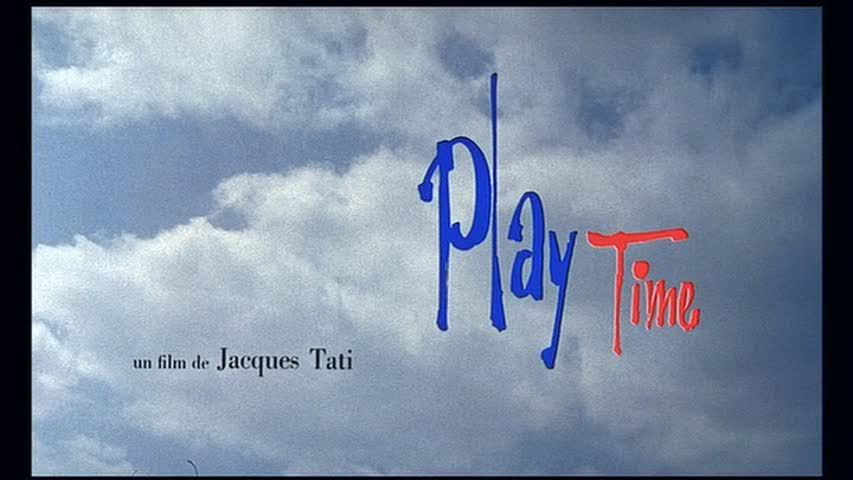
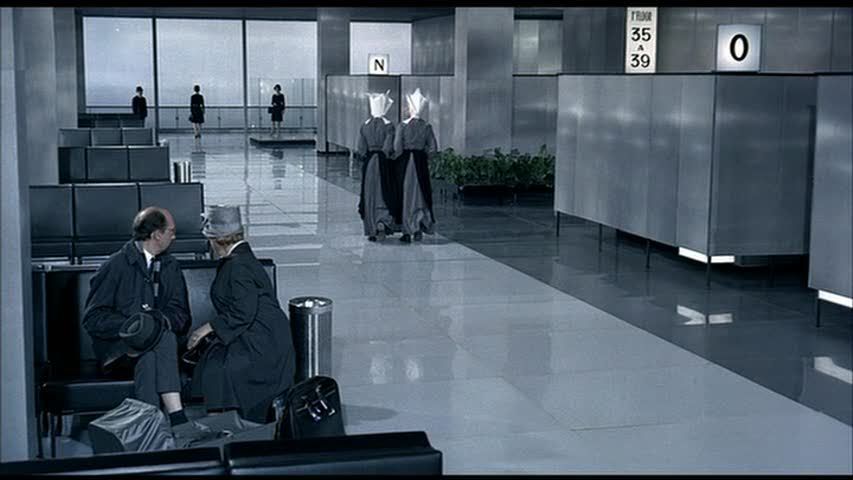
Play Time is one of the most exuberant, free-spirited, formally playful tributes imaginable to the spirit of invention and humor that leads people to make their own fun in the most unlikely of contexts. Director Jacques Tati constructed a formalist masterpiece in which characters, story, and dialogue are all but absent. The film takes place in a gray urban center, a prototypical modern city — it's meant to be Paris, but it hardly matters, because as Tati notes in a sly joke involving some travel posters, globalization and industrial progress are eliminating the differences between cities. As a group of American tourists arrive, taking snapshots of office blocks while ignoring the historical Paris landmarks (which show up from time to time as ghostly reflections in highly polished windows), Tati's Monsieur Hulot character wanders aimlessly through a corporate maze, baffled by the antiseptic neatness he encounters all around him. With the film's spare dialogue almost entirely relegated to the level of background chatter with little meaning, Tati allows his images to carry the film's subtle but often hilarious humor. A businessman's precise, choreographed movements take on syncopated musical rhythms as he goes about his routine. The white flaps on a nun's habit flutter like the wings of a seagull as she walks. An apartment block is turned into a cutaway Brechtian stage like the kind Godard would later employ in Tout Va Bien; Tati uses this setup for a series of deadpan, entirely silent gags about the conformity and complacency of modern families, who settle into box-like homes and stare at their walls to watch TV.
But the film's centerpiece is undoubtedly an extended sequence set at the opening night of a high-class restaurant where the staff and designers are still putting the finishing touches on the place even as the first customers arrive. As the night goes on, the restaurant's fancy façade begins to disintegrate, as one mishap after another shatters its fragile and counterintuitive construction: the stylish chairs leave crown-shaped indentations in the customers' backs; the wooden designs above the bar block the view between the bartender and his patrons; the air-conditioning unit is located in a huge pillar that is perpetually in the way of the maître d'. Finally, Hulot himself triggers the worst of the disasters, accidentally pulling down a large section of the ceiling, which has the effect of sectioning off one area of the restaurant into an ad hoc VIP section with a boorish American tourist playing bouncer. The more the restaurant falls apart, the more the people there seem to enjoy themselves, and the staid, ordinary dinner transforms into a wild, frenetic party with a packed dance floor and little pockets of merry-making scattered around the room. Tati captures everything with his long shots, packing the frame with people, all of whom have little bits of business and subtle sight gags: there's too much to focus on at any given moment, since literally every shot is packed with visual humor and miniature narratives playing out on the fringes of the image. The cumulative effect can't help but put a grin on anyone's face, as these anonymouse city-dwellers take such great delight in subverting and destroying the pre-packaged entertainment parceled out to them, instead making their own fun by playing in the wreckage of the modern world.
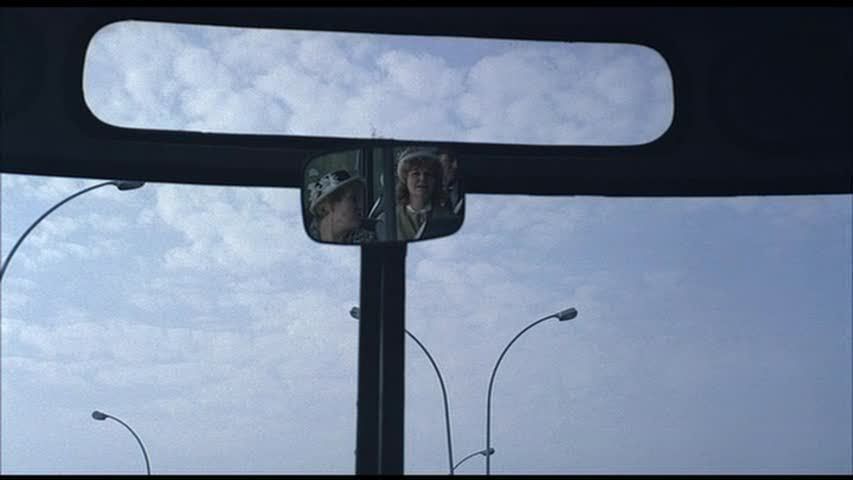

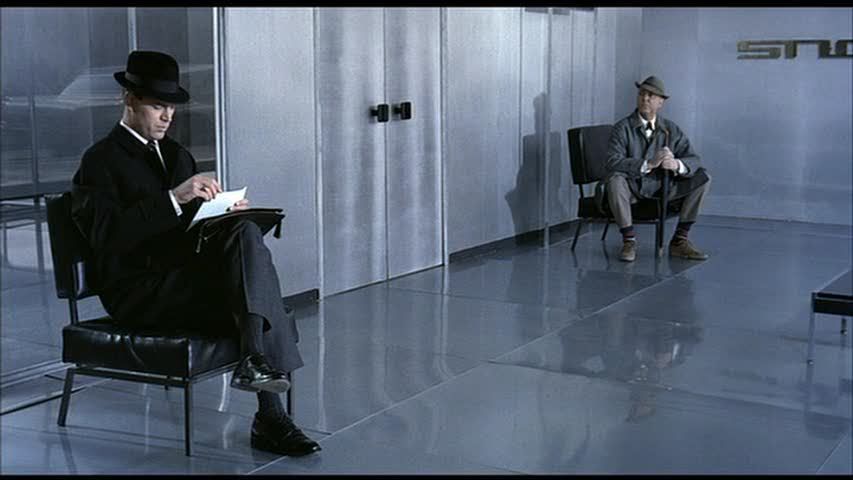
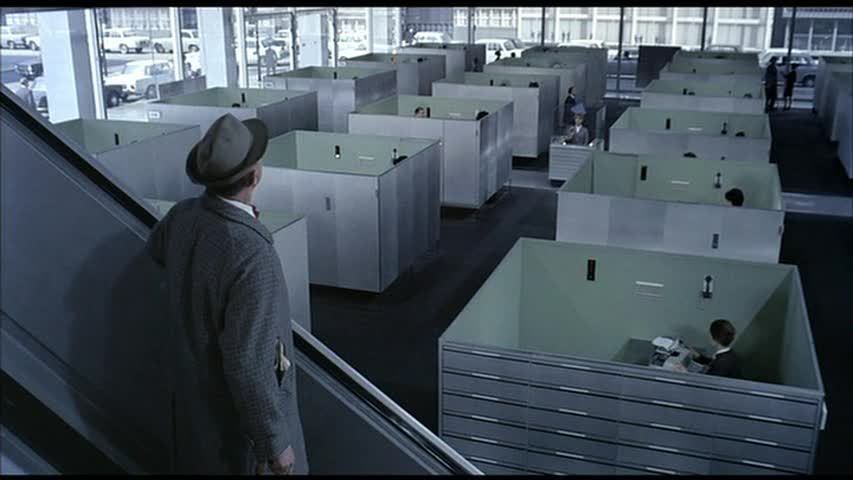
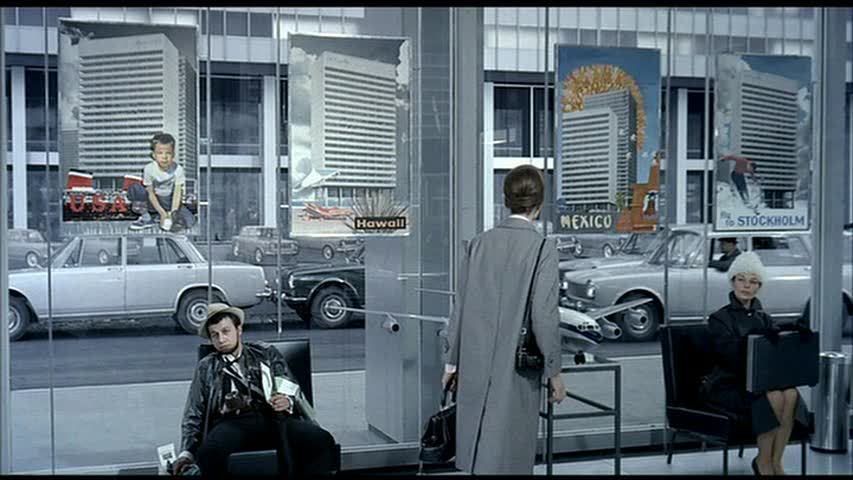
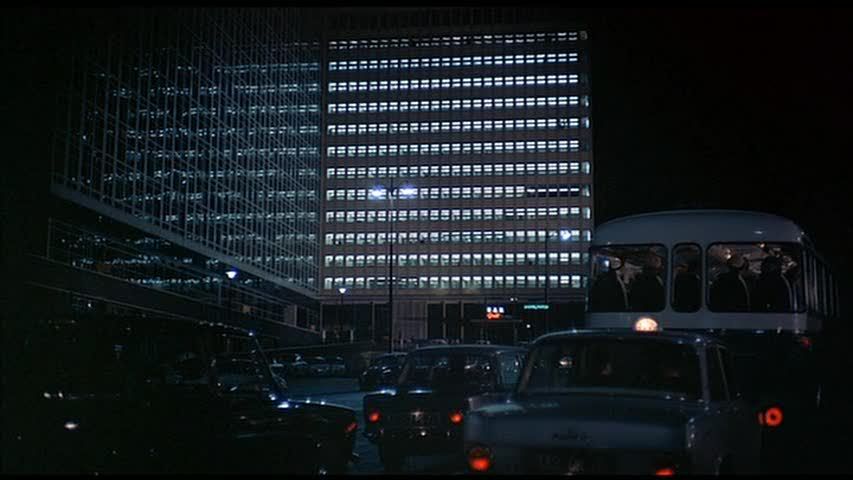

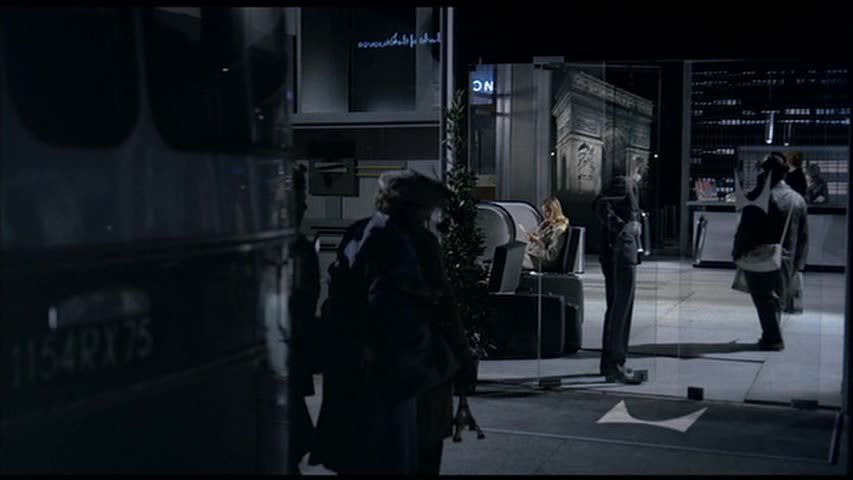

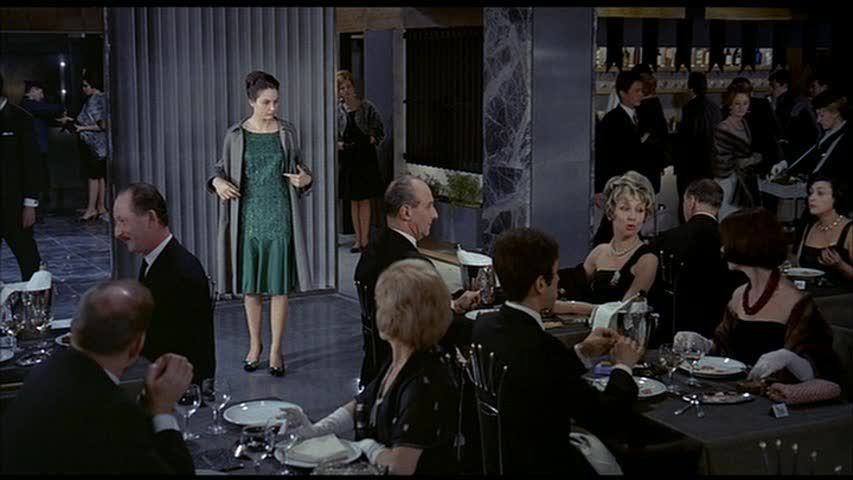

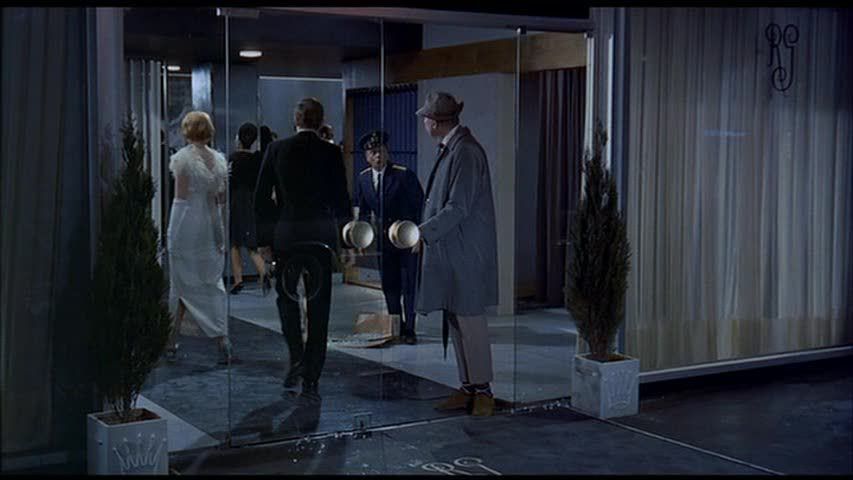
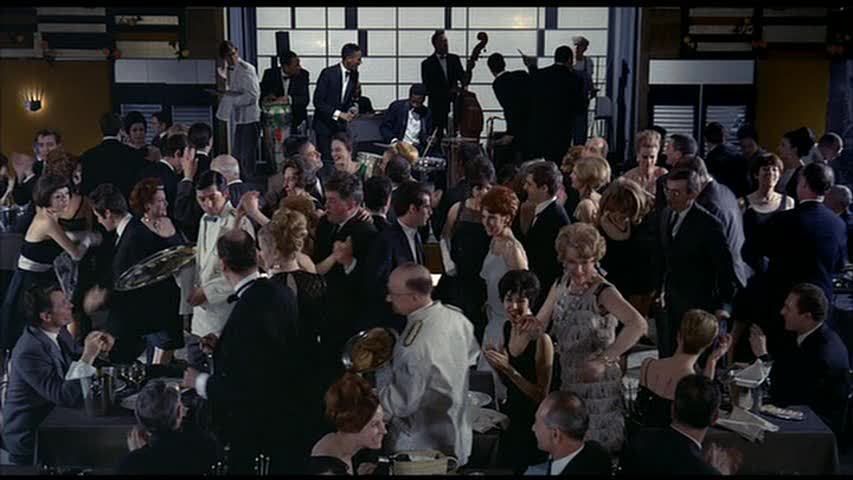
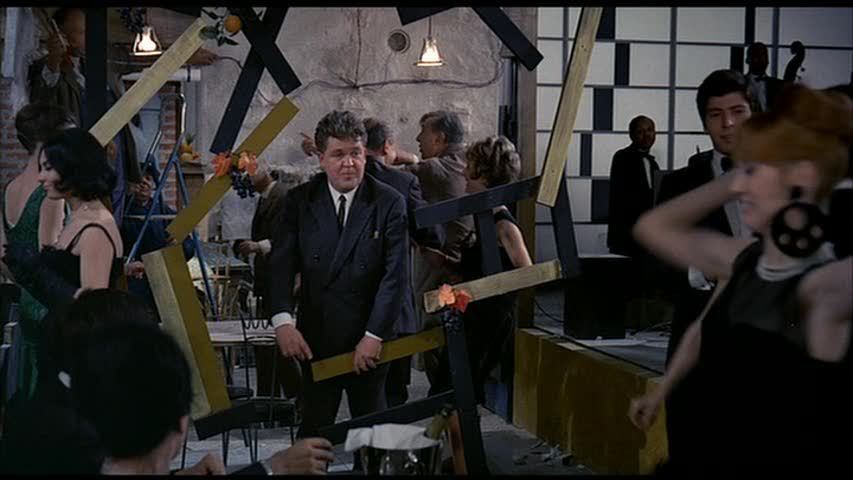




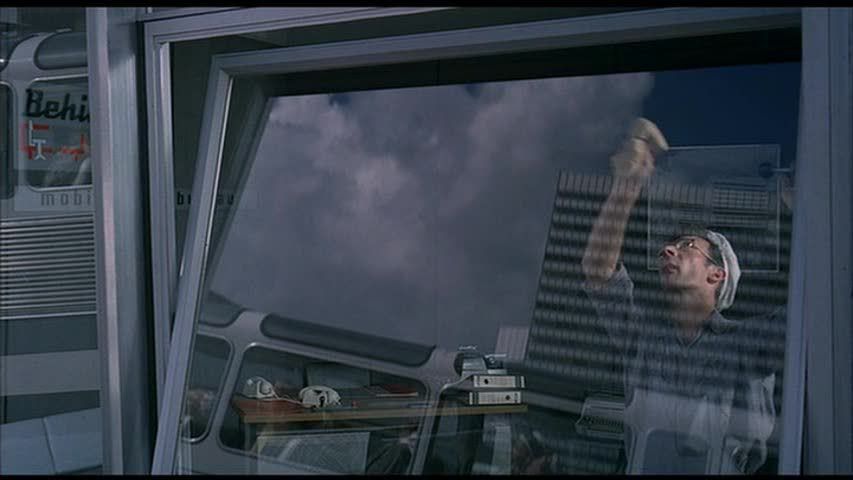
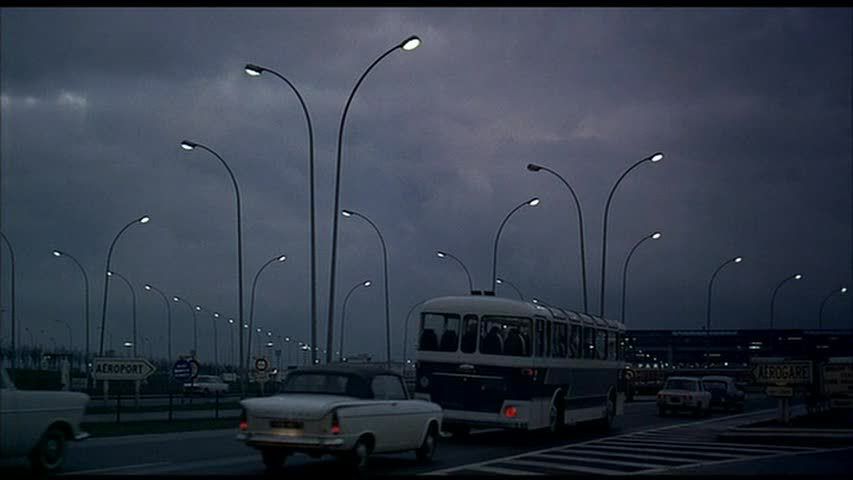







0Awesome Comments!